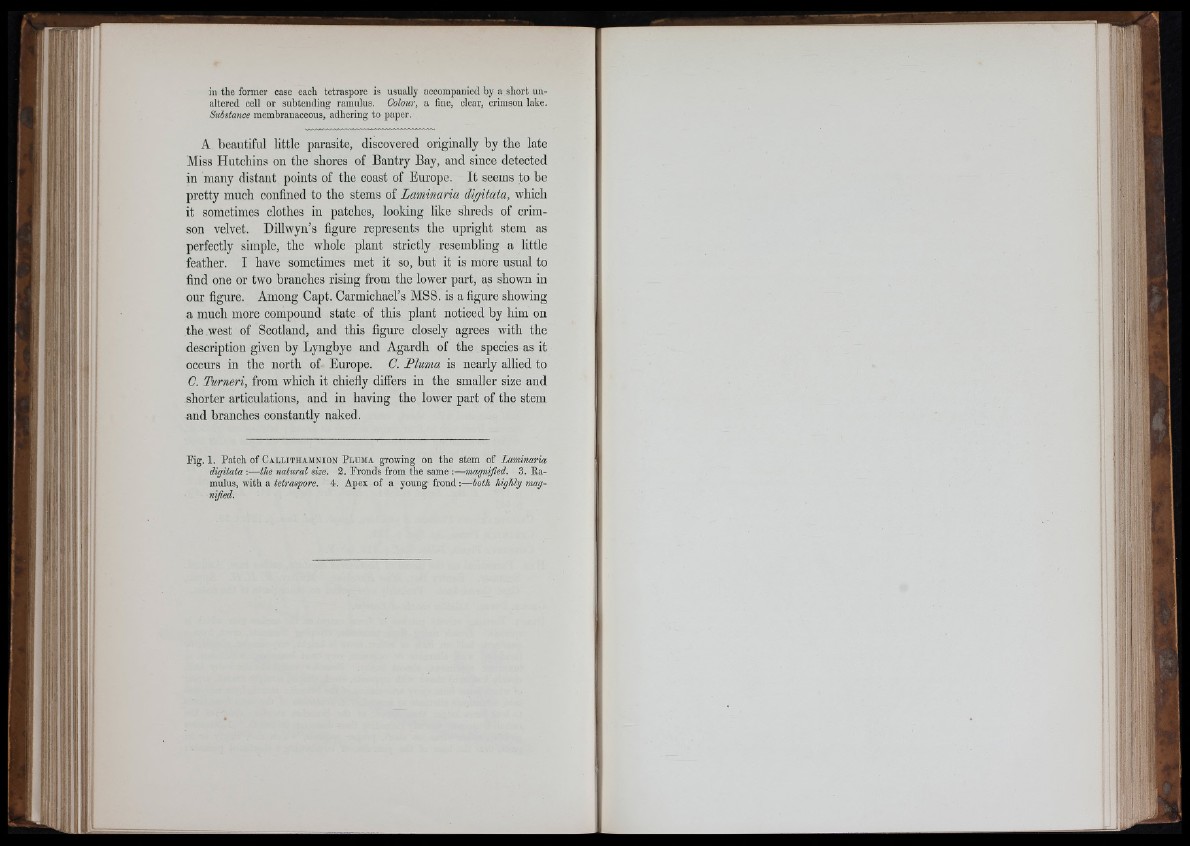
’u
ill the former case each tetraspore is usually accompanied hy a short unaltered
cell or subtending ramulus. Colour, a tine, clear, crimson lake.
Substance membranaceous, adhering to paper.
A beautiful little parasite, discovered originally by the late
Miss Hutchins on the shores of Bantry Bay, and since detected
in many distant points of the coast of Europe. It seems to be
pretty much confined to the stems of Laminaria digitata, which
it sometimes clothes in patches, looking like shreds of crimson
velvet. Dillwyn’s figure represents the upright stem as
perfectly simple, the whole plant strictly resembling a little
feather. I have sometimes met it so, but it is more usual to
find one or two branches rising from the lower part, as shown in
our figure. Among Capt. Carmichael’s MSS. is a figure showing
a much more compound state of this plant noticed by him on
the west of Scotland, and this figure closely agrees with the
description given by Lyngbye and Agardh of the species as it
occurs in the north of Europe. C. Pluma is nearly allied to
C. Turneri, from which it chiefly differs in the smaller size and
shorter articulations, and in having the lower part of the stem
and branches constantly naked.
Fig. 1 . Patch of C a l l i t h a m n i o n P l u m a growing on the stem of Laminaria
digitata :— the natural size. 2. Fronds from the same :—magnified. 3. Hamulus,
with a ¿eriaipore. 4. Apex of a young frond;— both
nijied.